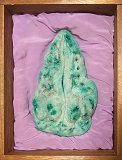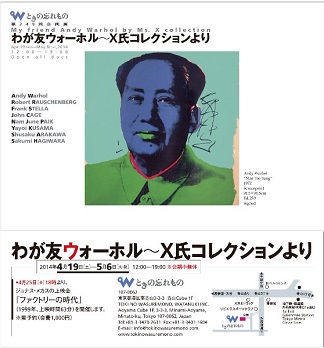Shusaku ARAKAWA |
Shusaku Arakawa was born 1936 in Nagoya. He graduated from the art program at Aichi Prefectural Asahigaoka High School, and enrolled for some time at Musashino Art University. In 1958, he participated in the Yomiuri Independent Exhibition. In 1961, Arakawa left for the United States and settled in New York. His long-lasting working relationship with Madeline Gins began in 1962. In 1970, Arakawa presented the project “The Mechanism of Meaning” at the Venice Biennale. “The Mechanism of Meaning” was also shown in 1972 in Germany, where it received praise by the renowned physicist Werner Heisenberg, resulting in Arakawa and Gins being invited to visit the Max-Planck-Institute. Arakawa’s work has been recognized in Japan and abroad: among his many awards, he received the Medal of Honor with Dark Blue Ribbon in 1982, and was named a Chevalier des Arts et des Lettres by the French government in 1986. In 2003, he was furthermore awarded the Medal of Honor with Purple Ribbon. His solo exhibition at the Guggenheim Museum in 1997 was the first exhibition of a Japanese artist at this museum. In his later years, Arakawa focused on projects exploring the relationships of architecture and gardening to the human, animals etc. and their respective behavioral patterns. In 1994, he collaborated with Arata Isozaki on the project “Places of Ubiquity: The temple Ryoanji in Nagi Town / Architectural Body” at Nagi Museum of Contemporary Art (Okayama Prefecture). |
In 1995, Arakawa designed the theme park “Yoro Reversible Destiny Site” in Gifu Prefecture. There were multiple injuries related to the structure of the park, however, Arakawa defended the site as having experienced only “a few irregularities.” In 2005, the “Reversible Destiny Lofts – In Memory of Helen Keller” opened in the city of Mitaka (Tokyo), based on the Yoro project. This was followed by “Bioscleave House – Lifespan Extending Villa” in East Hampton (New York State) in 2008. In addition, Arakawa engaged in a variety of large-scale urban reform projects. As the scope of his work expands beyond the common definitions of what it means to be an artist, Arakawa chose to describe himself as a “codenologist” (someone who attempts to integrate art, science and philosophy). His approach on the issue of ageing has been also noticed by philosophers and molecular biologists, and together with Madeline Gins he participated in conferences at Université Paris Ouest Nanterre La Défense and University of Pennsylvania. As a lecturer in Japan, Arakawa’s talks and presentations have left a lasting impression among specialists and professionals in a variety of fields such as Hayao Miyazaki, Takeshi Yoro, Ken’ichiro Mogi, and Susumu Tonegawa. He died in 2010, aged 73. |
|
|
||||
 From the series "Casket" Mixed media 43.0×32.8×11.4cm |
||||
|
|
||||
Inquiry form
2014 249th Gallery exhibition: My Friend Warhol - From the X Collection 4/19 - 5/6 
|
